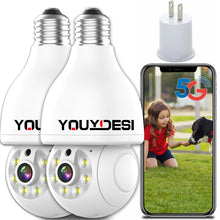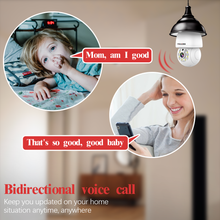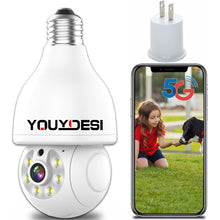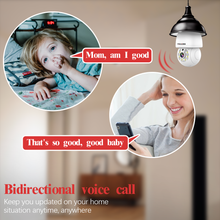Troubleshooting Common Issues in Surveillance Systems (Part 1)
In the initial phases of setting up a surveillance system, such as during installation, testing, and post-deployment, various technical glitches may occur. These issues can encompass the inability to run the system smoothly, failing to meet the design specifications, or experiencing subpar overall performance and quality – often referred to as "soft faults." These issues are practically inevitable, especially in complex, large-scale surveillance projects.
1. Equipment Failures Due to Incorrect Power Supply:
- There are several possibilities for incorrect power supply, including incorrect power cable connections, insufficient power (e.g., insufficient wire gauge, excessive voltage drops), short circuits, open circuits, or momentary voltage spikes. Equipment damage frequently occurs due to power supply errors or transient over-voltage in transmission lines. Therefore, meticulous inspections and checks are crucial before power is supplied during system setup.
2. Connectivity Problems Due to Poorly Handled Connections:
- Some equipment, like cameras with variable lenses and pan-tilt-zoom (PTZ) mechanisms, involve multiple connections. Inadequate handling of these connections, particularly the wiring connected to devices, can lead to issues such as breaks, shorts, poor insulation, or incorrect connections, resulting in equipment damage and degraded performance. In such cases, a methodical analysis of the issue is essential to identify the specific connection problem among the various connections. This approach helps narrow down the problem, and it's especially relevant for PTZ cameras that might dislodge due to constant movement.
3. Quality Issues Stemming from Equipment or Component Flaws:
- Theoretically, any equipment or component may have quality issues. However, from experience, such problems are more likely to occur with specific devices and parts, including decoders, motorized PTZ units, transmission components, and more. Some devices may not be unusable but might not meet certain technical specifications as stated in the product specifications. It's essential to conduct sampling and testing of selected products as needed. When it genuinely is a product quality issue, it's best to replace the product rather than attempting to disassemble and repair it.
4. Issues Resulting from Improper Equipment Calibration:
- Precise adjustments, such as setting the back focal distance of cameras, require meticulous and accurate work. Failure to calibrate these components properly may lead to focus issues, blurriness, or other problems during various operations of zoom lenses. Moreover, the correct positioning of switches and adjustment knobs on cameras, as well as the proper configuration of decoders and encoding switches, directly impact the equipment's functionality and overall system performance.
5. Problems Arising from Incorrect Interconnections Between Devices or Components:
- Issues often occur due to factors like negative impedance mismatches, inconsistent communication interfaces or modes, and inadequate drive capacity, especially when connecting control units to related devices like decoders or control keyboards. It is essential to select products from the same manufacturer for control units, decoders, control keyboards, and other interrelated devices.
6. Malfunctions Due to Inadequate Drive Capacity or Excessive Device Connections:- Some equipment, like video splitters, have alarm input interfaces, and their product specifications define the connection of the system host to alarm detectors, long-delay recorders, etc. In some scenarios, insufficient drive capacity issues can arise. Addressing these issues often involves using a dedicated alarm interface box to link the alarm detectors and video splitters. In the absence of an alarm interface box, self-designed and processed signal extension or driver devices can be used.
These issues can also manifest in the output and distribution of video signals.
Troubleshooting Common Issues in Surveillance Systems (Part 2)
1. Pan-Tilt-Zoom (PTZ) Mechanism Failures:
- Malfunctions in PTZ mechanisms can include difficulty rotating or a complete inability to operate. These issues often stem from increased operational loads on the PTZ mechanism when a camera with an additional load (such as a protective enclosure) is used. Properly matching the weight of cameras and their protective enclosures with the PTZ mechanism's capacity is essential, especially in outdoor settings, as the weight of protective enclosures can impede vertical rotation.
2. Inability to Remotely Control Cameras via Keyboards at Long Distances:
- When remote control via a keyboard fails, particularly at extended distances, the issue usually results from significant signal attenuation and weakened control signals received by the decoder. In such cases, installing relay boxes at specific intervals to amplify and recondition control signals is a common solution.
3. **Low Monitor Image Contrast and Over-Bright Images:**
- Low monitor image contrast and excessively bright images can result from various causes, such as lengthy transmission distances or significant signal attenuation in video transmission cables. In these situations, line amplifiers and equalizers should be added to compensate for signal loss.
4. Low Image Clarity and Loss of Details:
- Issues related to low image clarity and a loss of fine details, or even color signal loss or reduced color saturation, are often attributed to significant high-frequency signal losses (usually beyond 3MHz). In these cases, the transmission distance is too extensive, and the cable's distributed capacitance is excessive. Moreover, poor cable shielding can also lead to this problem. Ensuring the quality of video cables is of paramount importance, and cable replacement might be the most effective resolution if necessary.
5. Audio Distortion:
- Audio distortion is a common issue in long-distance video baseband transmission. This distortion primarily occurs because the high-frequency phase shift in the signal is too significant. In this case, the addition of phase compensators can effectively mitigate the distortion.
6. Keyboard Malfunctions:
- When inspecting connections and finding no issues, keyboard malfunctions can often be attributed to a keyboard failure. In such cases, refer to the keyboard's operational manual for troubleshooting steps, like a complete system reset. If the issue persists, keyboard replacement may be necessary.
7. Improper Image Switching on the Host:
- When images are not switching cleanly on the host, interference from other images overlaid on selected and cut images can occur. The source of this interference could be a poor-quality matrix switch or the lack of adequate isolation between images. If an RF transmission system is employed, excessive cross-interference or mutual modulation within the system can lead to this problem.
These are just some of the issues that can arise in large-scale surveillance systems. While these problems may indeed occur, careful device selection and quality control, coupled with strict adherence to standards and specifications during installation, can
help minimize their occurrence. Should any issues emerge, calm analysis and troubleshooting are essential, rather than hasty disassembly and repair.
Troubleshooting Common Issues in Surveillance Systems (Part 3)
1. Horizontal Rolling Bars on Monitor Screen:
- Horizontal rolling bars on the monitor screen can often be attributed to power issues or grounding loop problems. To differentiate between these causes, it's helpful to test the monitor screen with only a camera connected to the control host, eliminating power-related problems. If the interference is absent, this suggests the control host is working correctly. You can then connect a portable monitor to individual front-end cameras to systematically identify the problematic camera. If the issue is power-related, further investigation is needed to determine the specific source of the problem.
2. Wood Grain Interference on the Monitor:
- Wood grain interference appears on the monitor screen and can range from a minor nuisance to severe disruptions of normal image viewing and synchronization. Various factors can lead to this issue, but it typically results from poor-quality video transmission cables, particularly those with inadequate shielding (i.e., non-standard copper cables or excessively thin shielding). Using subpar video cables can result in significant signal attenuation due to high cable resistance, leading to worsened interference. Proper video cable impedance (75 ohms) is also crucial. Confirming the issue's origin is vital before assuming cable quality problems, as other factors may also cause this kind of interference. If it does indeed point to cable quality, the best approach is to replace all the subpar cables with compliant ones.
3. Electrical Noise in the Power Supply:
- Unclean power sources can introduce electrical noise into the system, manifesting as interference superimposed on the regular power supply (50Hz sine wave). This interference often arises from equipment using silicon-controlled rectifiers (SCRs) in the power grid, especially high-current and high-voltage SCRs, which can severely pollute the power supply. Installing a power purification system or an online uninterruptible power supply (UPS) can help resolve this issue by providing clean power to the entire system.
4. Interference from Strong Emissions Nearby:
- Interference on the monitor screen can occur when powerful and high-frequency electromagnetic emissions are present near the transmission system, the system's front end, or the central control room. To address this, understanding the environmental factors and avoiding or relocating the system to minimize exposure to emissions sources is a crucial step. Furthermore, enhancing shielding for front-end and central equipment, as well as employing conduit for transmission lines, along with proper grounding, can help mitigate interference caused by radiation sources.
5. Disturbances from Short or Open Circuits in the Core and Shield of Video Cables:
- This type of interference is marked by extensive, chaotic patterns on the monitor screen, making it impossible to view images or maintain sync signals. The primary cause is often poor or disrupted connections at BNC connectors or other types of video connectors. When these disturbances occur, it's generally due to poor connections, not an issue that affects the entire system. Careful inspection of these connections and corrections can resolve this issue effectively.
6. Impedance Mismatch Resulting from Video Cable Characteristic Impedance:
- Impedance mismatch often leads to the appearance of evenly spaced vertical bars on the monitor screen, with the interference signal's frequency typically being a multiple of the line frequency. This occurs due to the characteristic impedance of video cables not being 75 ohms, leading to impedance mismatch. To address this issue, techniques involving series or parallel terminations are often employed. Additionally, it's essential to note that this issue may not manifest when video transmission distances are very short (typically within 150 meters) and when using cables with impedance mismatch and excessive distributed capacitance.
7. Spatial Radiation Interference from Nearby Devices:
- This interference is attributed to strong and high-frequency spatial radiation sources in proximity to the transmission system, system front-end, or central control room. Addressing this situation involves understanding the surrounding environment and minimizing proximity to radiation sources during system installation. If avoiding radiation sources is not feasible, increasing shielding for front-end and central equipment, using conduit for transmission lines, and ensuring proper grounding can help reduce radiation interference.
To mitigate these issues, ensuring the quality of video cables is paramount. If cable quality problems persist, replacing substandard cables with compliant ones is often the most effective solution.
0
My Cart
Review your cart
0 items
Your cart is currently empty.
TRENDING
Popular Products
YOUYIDESI Smart 360-Degree Rotating Light bulb Camera with Dual-Band Wi-Fi, Motion Sensor, and Secure Video View for Indoor/Outdoor Home Security - 5MP High-Definition Wireless Bulb camera (2 pack)
$120.00
$57.99
Translation missing: en.general.accessibility.error
Quantity must be 1 or more
YOUYIDESI Smart 360-Degree Rotating Light bulb Camera with Dual-Band Wi-Fi, Motion Sensor, and Secure Video View for Indoor/Outdoor Home Security - 5MP High-Definition Wireless Bulb camera
$59.99
$29.99
Translation missing: en.general.accessibility.error
Quantity must be 1 or more










